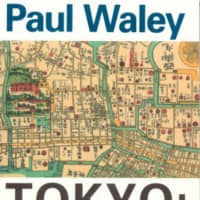It is slightly dismaying that Tokyo, the largest city on earth, has had only a relatively small body of serious work written about it in English. Cultural geographer Paul Waley is one of a handful of writers — Edward Fowler, Roman Adrian Cybriwsky, Edward Seidensticker and Hidenobu Jinnai among them — that we turn to for informed and creative interpretations of the megalopolis.
Tokyo: City of Stories, by Paul Waley.
288 pages
WEATHERHILL, Nonfiction.
A considerable amount of urban development and physical warping has taken place since the book was published in 1991, but "Tokyo: City of Stories" remains as germane today to our understanding of the mechanisms of change as it did when it first appeared. While paying heed to the history of Tokyo's major commercial and entertainment hubs, Waley's inclinations are to eschew the odorless glass and titanium towers, the brilliant corporate centers of the city, in preference for districts soaked in human narrative.
Employing a mix of scholarly fieldwork and serendipity, the author guides us through a number of overlooked sites, like the old literary denizen of Negishi; the now dismal Senzoku Yon-chome, once a major pleasure quarter; the flophouses of Sanya; and the smidgens of Meiji Era (1868-1912) residential architecture found in the backstreets of Honjo.
Waley's incisive descriptions of the city, by turns critical, wistful and elegiac, teach us that, though we may condemn the urban bricolage superimposed on the older, more graceful quarters of the city, they are integral strata and encrustations of an organic mass that is, despite its manifold imperfections, a wonder to behold.

















With your current subscription plan you can comment on stories. However, before writing your first comment, please create a display name in the Profile section of your subscriber account page.